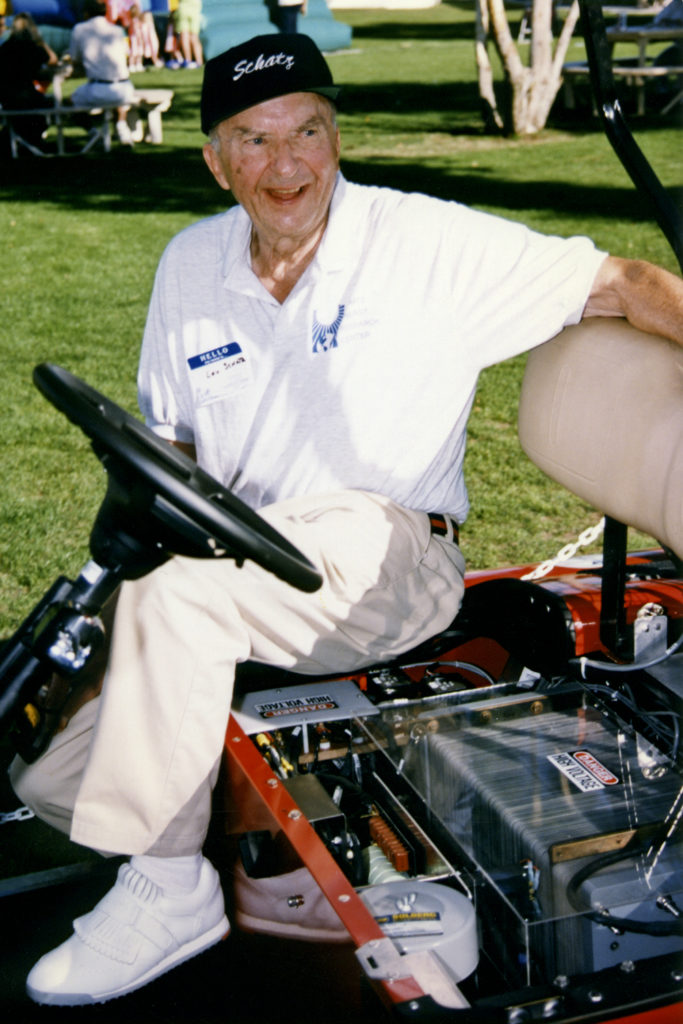
The Schatz Center is named after Dr. Louis W. Schatz, our original supporter and largest benefactor. The Center would not exist without him.
Dr. Schatz was trained as a forester and was working for the U.S. Forest Service when the States entered World War II in 1941. All the natural rubber that the country was producing went to the war effort — and so when fire hoses sprung leaks, there was no rubber to replace them. Dr. Schatz invented a plastic coating to repair the hoses, and he was then sent to work producing plastics for the armed forces. This led him to found General Plastics, a company that specialized in structural plastics for the aerospace industry.
While helping his sons with their science projects in the 1950s, Dr. Schatz became interested in solar energy. He recognized early on that solar technology would need energy storage. In the 1980s, he experimented by building a solar powered electrolyzer with a photovoltaic module and a couple of welding rods. He electrolyzed water with solar electricity and captured the hydrogen produced in a balloon, which he ignited with a match. He said later, “When that balloon went BOOM, I knew I was on to something.”
Dr. Schatz went looking for someone to research the idea of using hydrogen to store solar energy. He connected with Peter Lehman, the energy resources professor in Humboldt’s Environmental Resources Engineering department. Together, they developed a plan to build the Schatz Solar Hydrogen Project, the Center’s first project. When he sent his first contribution, Dr. Schatz wrote, “I look forward to a successful research effort and hope that eventually it can solve many of the world’s energy and pollution problems.”
Throughout the first decade of the Center’s existence, Dr. Schatz was an active participant as well as a financial backer. Overall, he contributed over $12M to the Center. He established an endowment, which continues to support us now and into the future. A bequest from his estate funded the construction of our main lab and office building and our West Wing building, both on the Cal Poly Humboldt campus. In 1994, Humboldt awarded him an honorary Doctor of Science degree in recognition of his contributions to the University.












